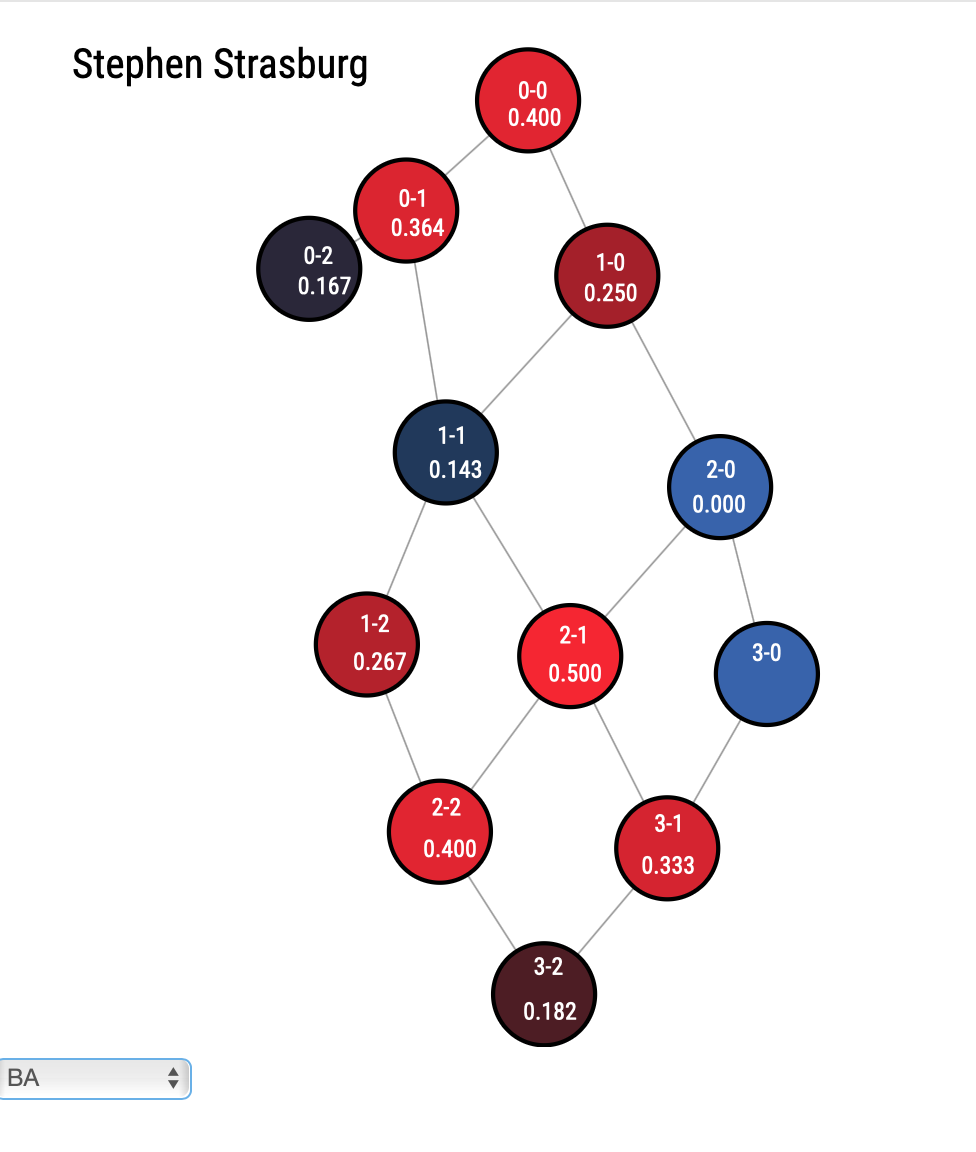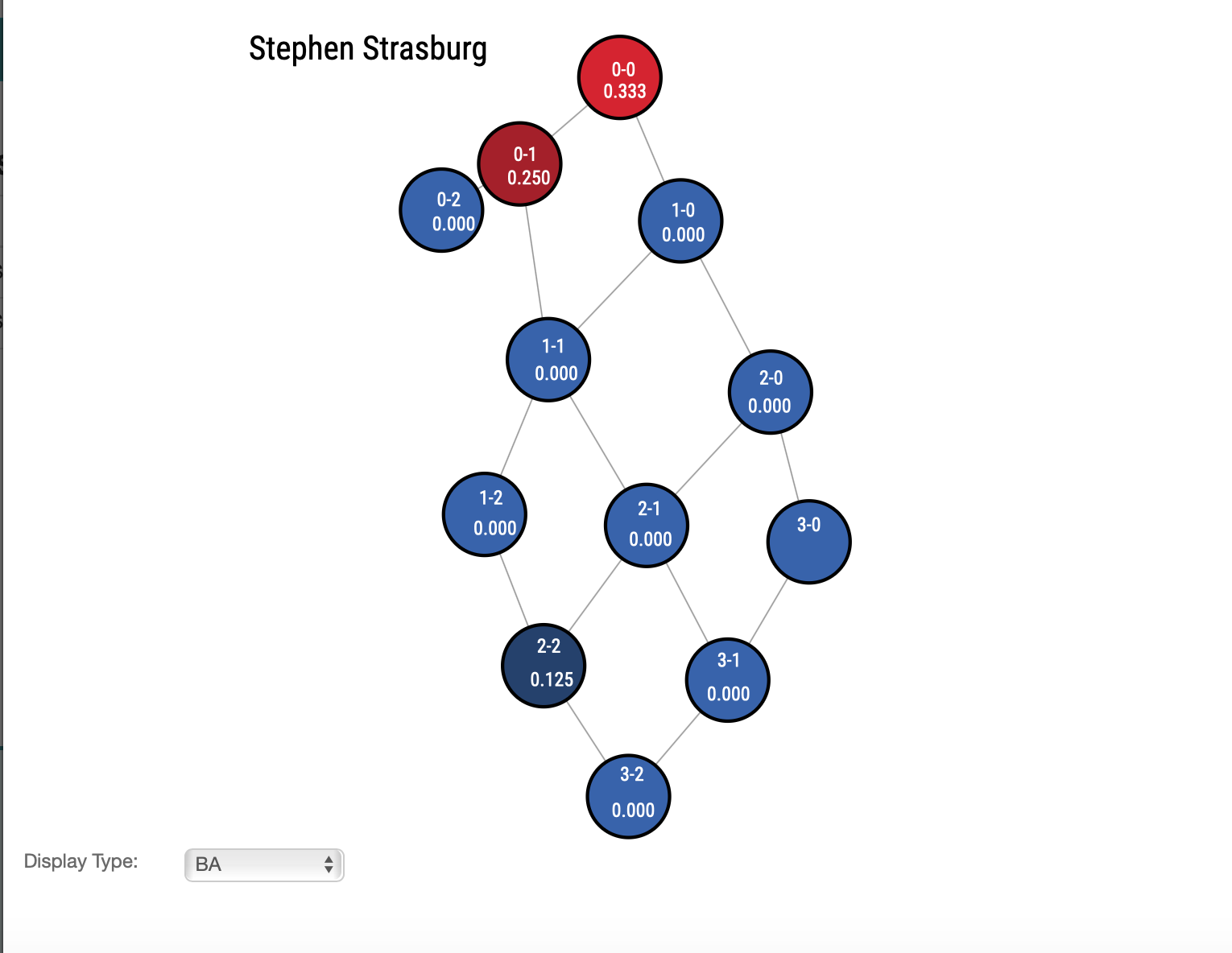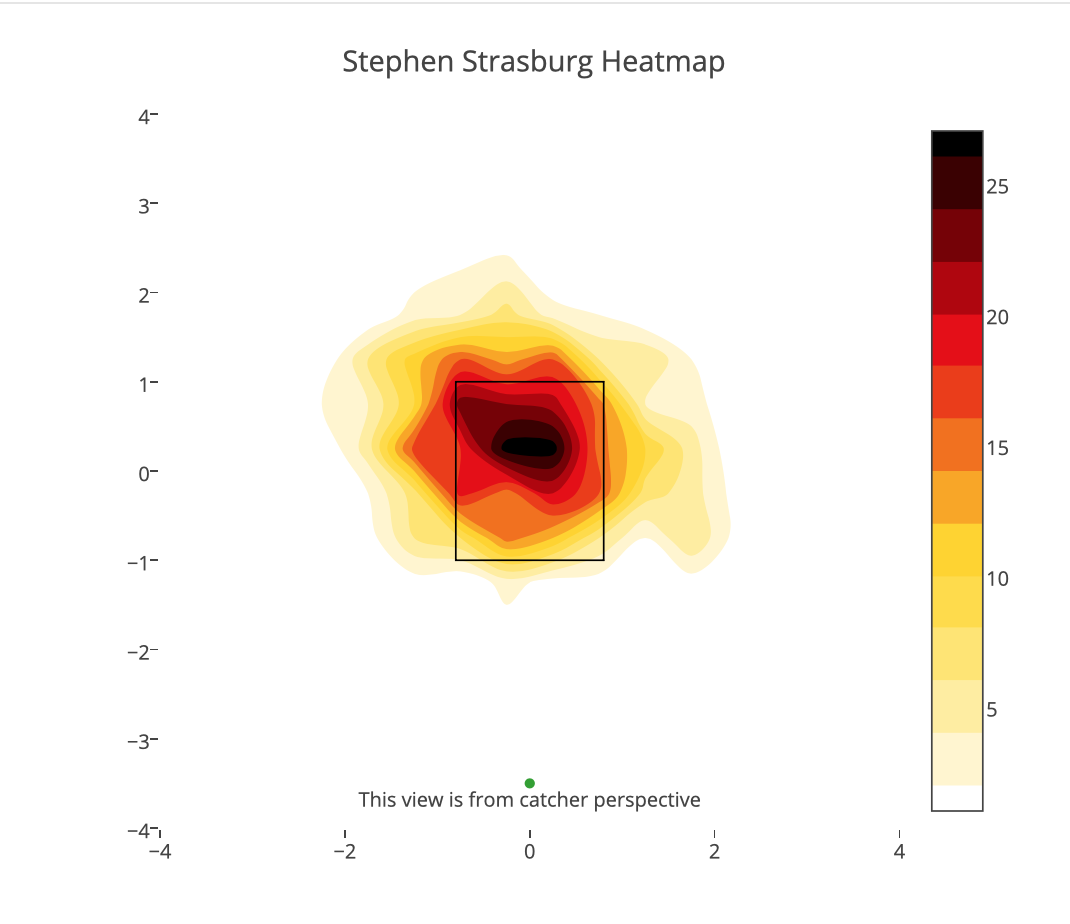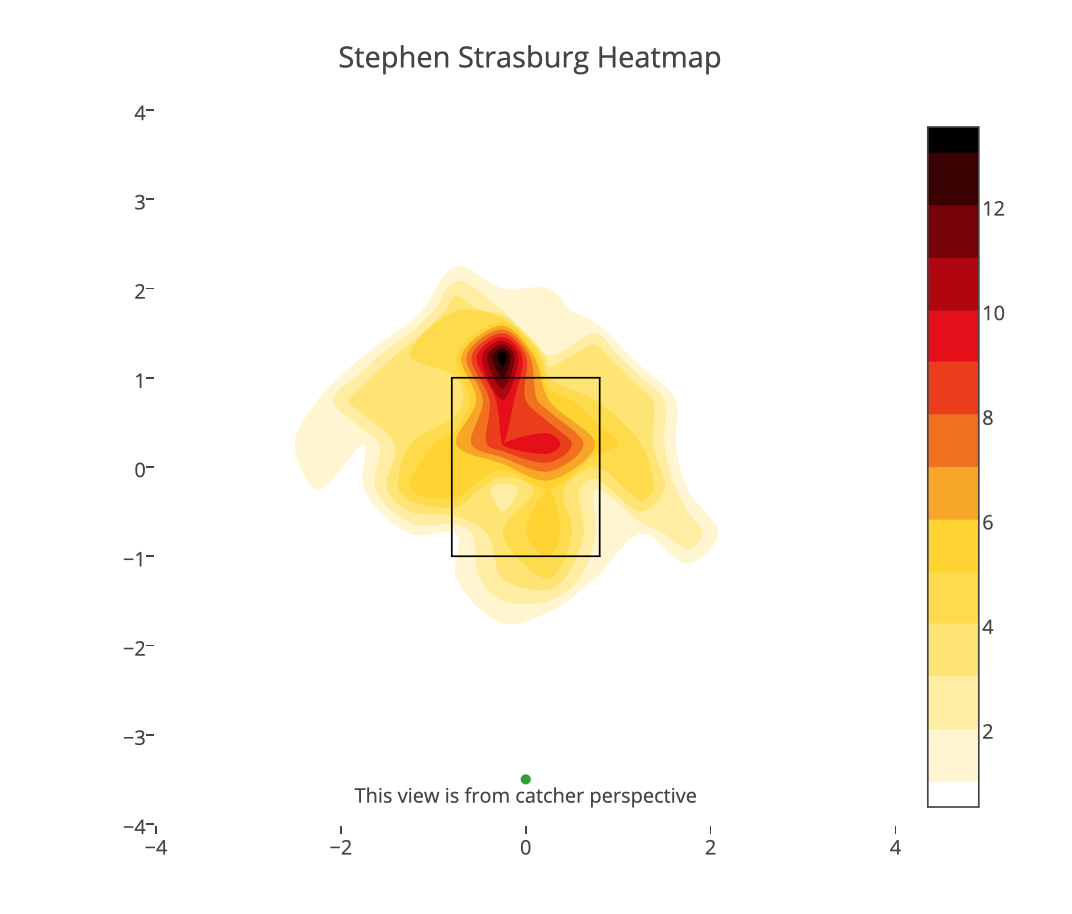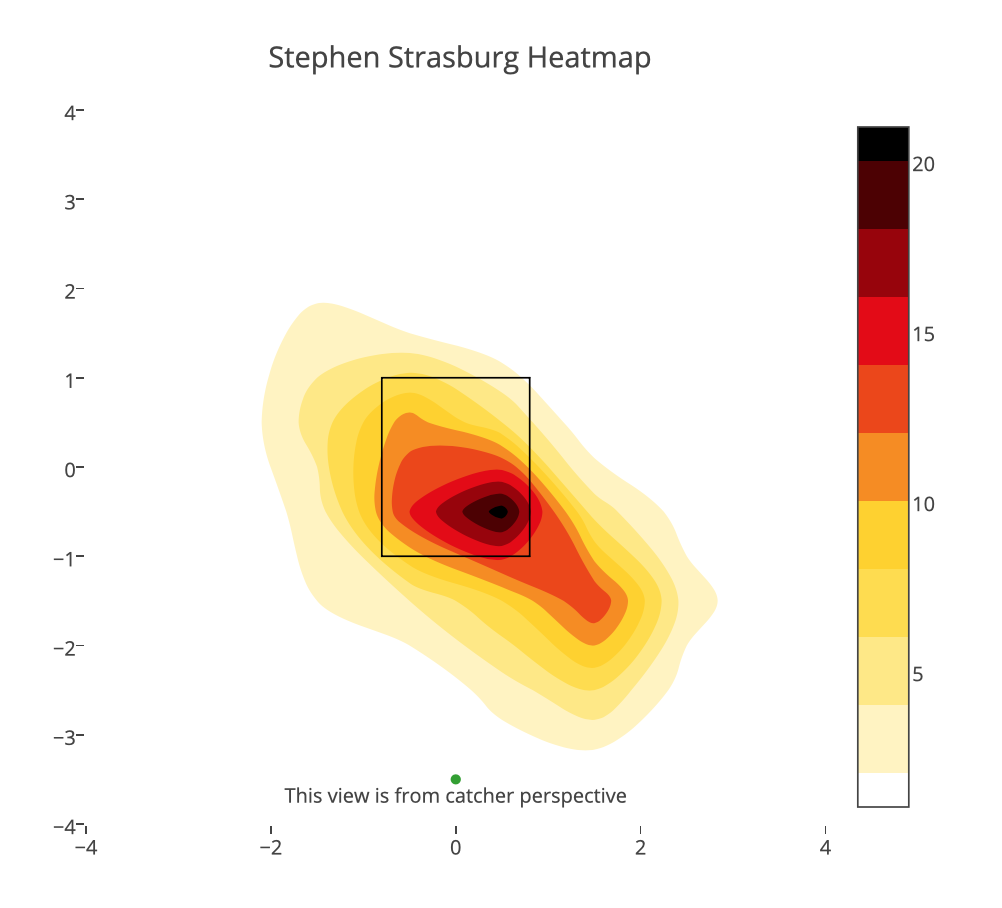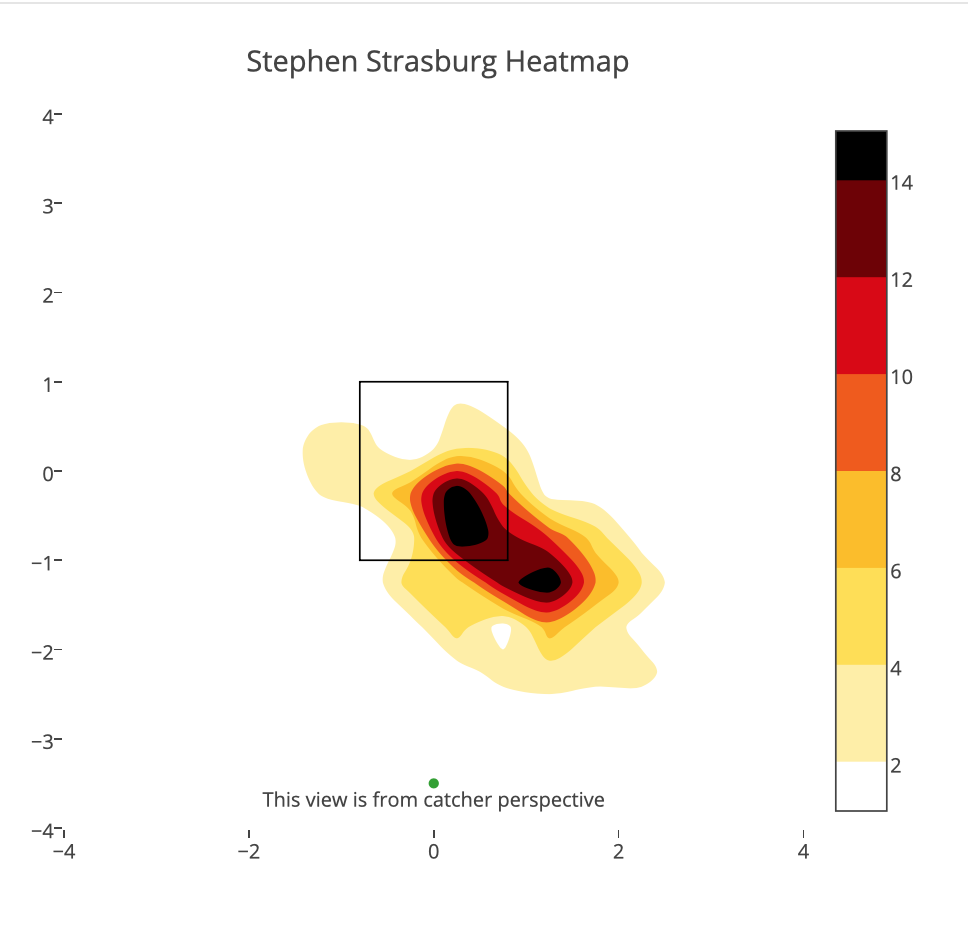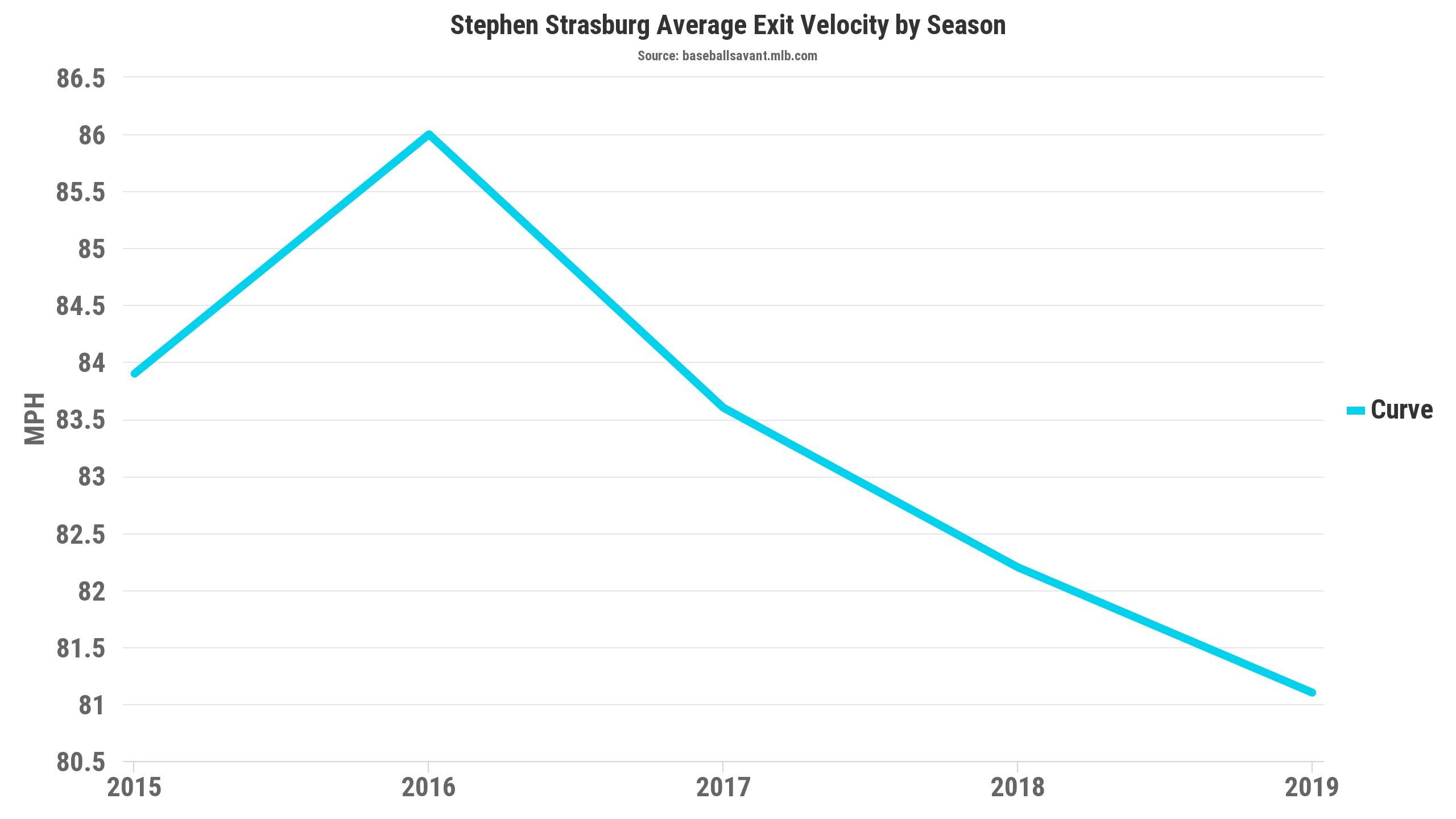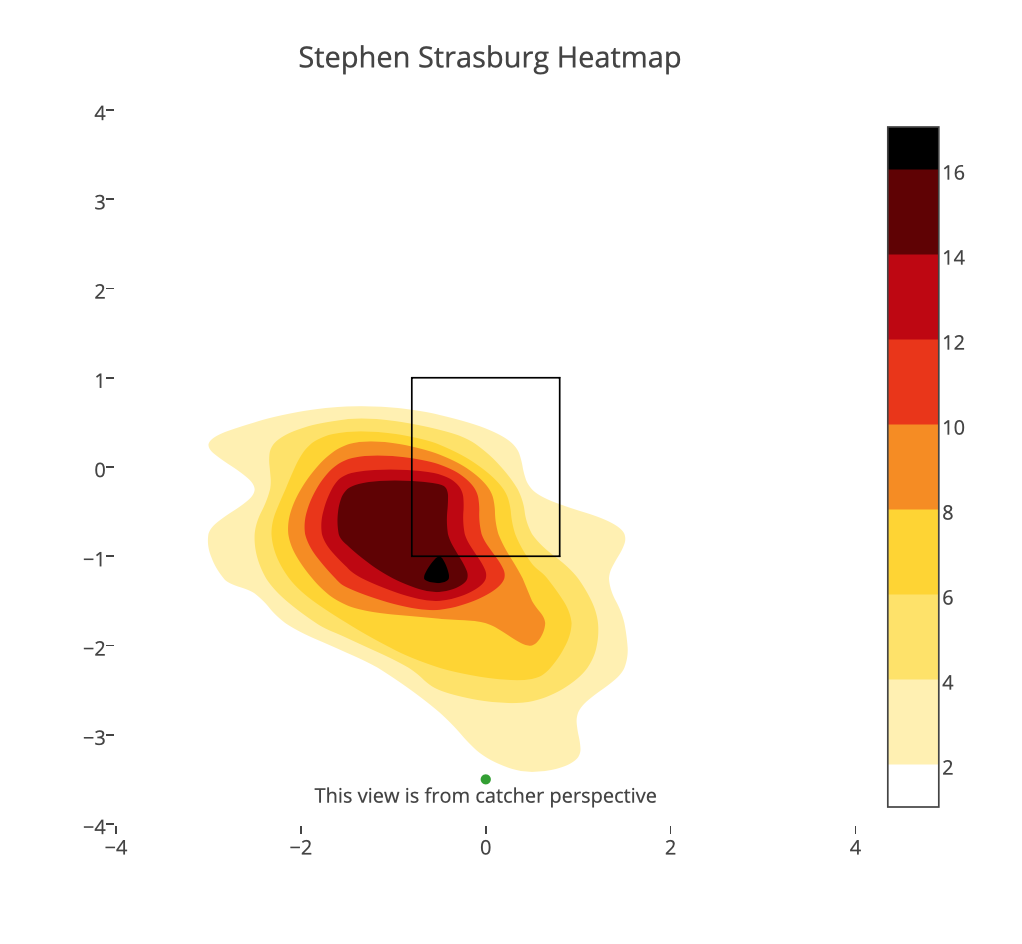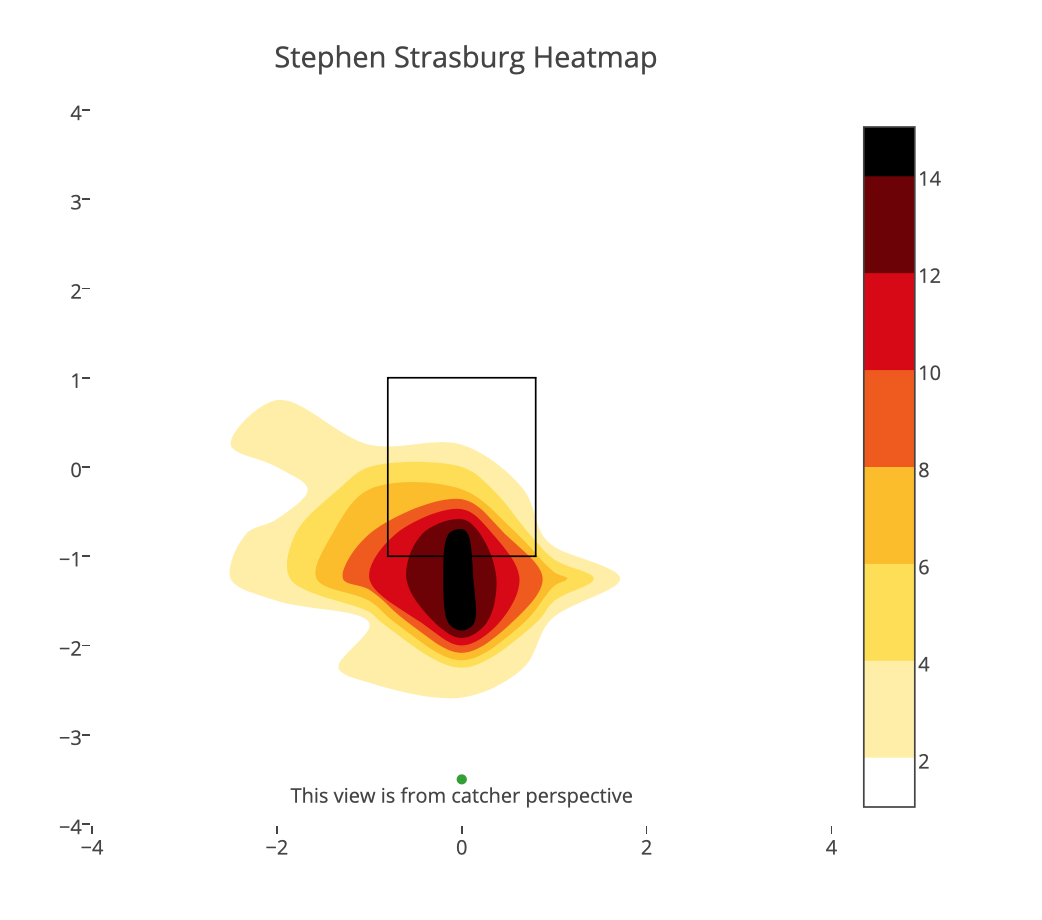I remember the first time I saw Stephen Strasburg pitch. It was back in June 2010 against the Pittsburgh Pirates. He gave up one run but struck out 14 Pirates with a swinging-strike rate of 18.1%. It was an amazing debut for the rookie who was drafted first overall by the Nationals just a year before.
Unfortunately, the baseball gods cannot let us baseball fans have anything nice, and he had to have Tommy John surgery later that year. Since coming back from the surgery, Strasburg as continued to dominate hitters. He has always been a two-strike rate monster. From 2016 to 2018, Strasburg had the fourth-highest two-strike rate for a starting pitcher at 27.9%. The only starting pitchers above him were Max Scherzer, Justin Verlander, and Chris Sale. Talk about being in some elite company!
You can read more about the two-strike rate in Nick Gerli’s and Dan McNamara’s articles on the subject.
This year, Strasburg has a 25.7% two-strike rate, which is still in the top 20 of all starting pitchers. Strasburg not only dominates two-strike rate but also CSW rate. His CSW rate, about which Alex Fast wrote, is 33.6%, which is the fifth-highest CSW rate for starters. The only starting pitchers ahead of Strasburg are Blake Snell, Gerrit Cole, Shane Bieber, and Chris Sale. In my eyes, Strasburg should be considered a top-five real-life starting pitcher. He has three plus pitches and typically goes deep into games, which is VERY important considering Sean Doolittle is the only reliable pitcher in the Nationals bullpen. As for fantasy, Strasburg is a top-10 starter because of his injury risk. He has only pitched more than 180 innings twice in his career and not since 2014.
But what makes Strasburg so good? Let’s dig in!
Improving Four-Seam Fastball
Strasburg really “struggled” with lefties last year as they hit .250/.311/.413. Initially, it might not look horrible, but his career numbers against left-handed hitters sit around .222/.286/.347. The pitch that plagued Strasburg against lefties, in particular, was the four-seam fastball. It seemed like batters knew the four-seam was coming and absolutely teed off on it. In 0-0 counts, lefties were hitting .400. In 2-1 counts, they were hitting .500 and in 2-2 counts, .400.
So far this year, the pitch is much better. In 0-0 counts, lefties are hitting .333. In 2-1 counts, they are hitting .000 and 2-2 counts, .125.
One change that Strasburg has made is where he is throwing the four-seamer. Instead of simply up in the strike zone, he is now throwing it even higher.
So far this year lefties have a .103 average and .179 slugging. The whiff rate is up from 20.2% to 29.7% and strikeout rate up from 16% to 30.2%.
Wicked Curveball
The curveball is a pitch that used to plague Strasburg, especially against righties. In 2016, albeit throwing only 9% of the time, righties hit .313 with a .406 slugging percentage off the pitch. It has gotten better every year since, and it is now a wipeout pitch. Back in 2016, he was leaving the pitch low and away to righties but still in the zone.
Now, he’s throwing that curve low and away, but more of those pitches are outside of the zone.
He is also getting soft contact on the ground. The league average on the curveball is 90.8 mph with a 35.6-degree average launch angle. Strasburg’s curve is averaging an exit velocity is 80.2 mph with a 3.4-degree average launch angle.
Also encouraging to see that Strasburg is more confident in the pitch and is throwing it more often. Last year, he threw the curve 19.5% of the time. This year, Strasburg is throwing the pitch 30.4% of the time. He is also getting more vertical movement on the pitch, meaning it has more drop now than it had last year. His curve has 51.5 inches of drop, which is an increase from 50.7 inches of drop. Add that to his above league average horizontal movement and you have an absolute monster of a pitch.
Mix ‘Em Up with the Changeup
The changeup has always been one of Strasburg’s best pitches. It has always generated a swinging-strike rate higher than 20 percent. This year, the change has a 27.6% swinging-strike rate, which is its highest since 2012. Overall, batters are hitting .176 with a .314 slugging percentage against the pitch. What is interesting is that he is throwing the change differently to righties, and it has been really successful. Instead of down and inside to righties, he is pitching more down and away from them.
This change has reduced his strikeout rate from 69.8% to 57.1% but has also decreased his walk rate from 9.3% to 0%! Based on the movement of the pitch, the change is very similar to Luis Castillo’s change. Strasburg’s change has 32 inches of drop and 15.6 inches of horizontal movement, which is above league average in both categories. Castillo’s has a bit more drop and horizontal movement, but to even be in the same area as Castillo’s change is really saying something.
Strasburg has also been throwing the change more in the zone, up to 27.2% of the time, and batters are making more contact. However, the average exit velocity of a changeup in the zone is 86.4 mph, which is down from 89.3 mph last year. The league’s average exit velocity on changeups in the zone is 88.4 mph this year.
Featured Image by Justin Paradis (@freshmeatcomm on Twitter).

